The PowerWalker VI 1500 CSW UPS Review: Trying For True Sinewave on a Budget
by E. Fylladitakis on April 13, 2022 8:00 AM EST- Posted in
- Cases/Cooling/PSUs
- UPS
- PowerWalker
- BlueWalker
- 1500VA
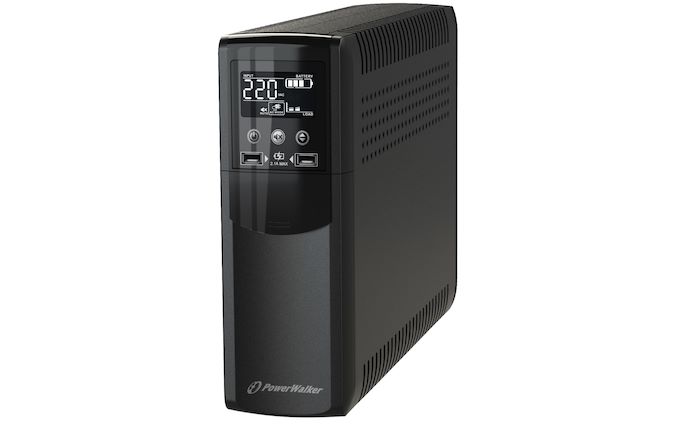
Editor's Note: Today we're kicking off a new review category for AnandTech: Uninterruptible Power Supplies. These devices are becoming increasingly common as desktop users are looking for laptop-like reliability. All the while, it's also an area that we feel is lacking in good, EE-enlightened systematic reviews. So our multi-talented power guru, E. Fylladitakis, is applying his skills to UPSes. As this is a new area for us, please let us know what you think in the comments below!
While Uninterruptible Power Supplies are hardly a new thing in the PC space, the tried-and-true battery backups for desktop PCs have been undergoing a resurgence in popularity in recent years. Improvements in power delivery technology such as GaNs have been reducing costs and improving reliability, and meanwhile lithium-ion batteries, with their much greater energy density/lower volume, are starting to make inroads on the UPS market as well. All the while, with laptops outselling desktops in the consumer PC market, a PC that doesn't shut itself down during a power outage is becoming the norm, rather than the exception. So what better time is there to take a look at UPSes?
To kick off our inaugural UPS review, we're starting with a 1500VA unit from BlueWalker. BlueWalker is a company that originates from Germany and specializes on the design and marketing of power-related equipment. The company was founded in 2004, making it one of the oldest household UPS/AVR manufacturers that still exist to this date.
BlueWalker is marketing their retail products under the PowerWalker brand name and has a very wide portfolio of both hardware and software products available. For today’s review, we are taking a look at the PowerWalker VI 1500 CSW, a 1500VA/900W UPS that boasts a true sinewave output.
| PowerWalker VI 1500 CSW | |||
| Power Capacity | 1500VA/900W | ||
| Output Voltage | 230 VAC | ||
| Input Voltage | 170-280 VAC | ||
| Type | Line Interactive | ||
| True Sinewave | Yes (ish) | ||
| Battery | Lead-Acid, 2x 12V/9Ah | ||
| Full Load Backup Time | 3.5min | ||
| Half Load Backup Time | 10min | ||
| Battery-Backed Sockets | 2 (Type F) | ||
| Surge Protected Sockets | 2 (Type F) | ||
| USB-A Outputs | 2 (2.1A) | ||
| Ethernet Surge Protection | Yes | ||
| LCD Display | Yes | ||
| Dimensions | 99 x 280 x 410 mm | ||
| Weight | 13.1 kg | ||
Given that BlueWalker is a German company, there should be little surprise that the PowerWalker VI is geared towards the European market. The UPS only outputs at a nominal 230V, and similarly, is only designed to accept voltages around that range (sorry, Americans!). Past that, this specific version comes with 2 battery-backed Type F sockets, as well as another two sockets with just surge protection. With 216 Wh of lead-acid battery capacity, it's rated to run a full load for a few minutes, stretching into the double-digits at a half load or less.
Of particular interest with this UPS is the price: true sinewave units have historically carried a significant price premium, but BlueWalker isn't charging nearly the same premium as true sinewave UPSes from other major manufacturers, making the PowerWalker VI 1500 CSW a much cheaper UPS – and at around €180, one that's popular on the market as a result. But can it live up to the same high power delivery expectations without the same wallet-busting price? Let's find out.
The PowerWalker VI 1500 CSW UPS
We received the PowerWalker VI 1500 CSW in a relatively simple cardboard box, with the heavy unit well-protected by thick packaging foam pieces. Inside the box, we found a CD with the compatible monitoring software, thorough manuals in several languages, and a USB cable.
The PowerWalker VI 1500 CSW is a tower-style UPS with an LCD screen at the front. Measuring only 410 mm deep, 100 mm wide, and 280 mm tall (16.2 in × 4 in × 11 in), it is very compact for a unit with that high of an output. There are also two USB charging ports at the front, right under the LCD screen.
The LCD screen, once turned on, will show the basic electrical figures of the unit, such as the voltage, the load, and the remaining battery time. It stays off most of the time and the user needs to press the power button momentarily in order to turn it on.
At the rear side of the tower, we find four power sockets. We are testing the version with the four Schuko (Type F) sockets, but BlueWalker also offers this unit with UK and FR sockets, plus a version with eight IEC socket.
Note that only two sockets offer battery backup, as the other two are for surge protection only. In fact, having just two sockets connected to the unit’s battery backup output is an atypically low number of powered sockets for a 1500VA UPS, as we usually see more.
Along with power protection, there is also a non-destructive circuit breaker and an Ethernet surge protection path (input-output jacks) available with the PowerWalker. Finally, there is a fan that will only turn on when the unit is running on batteries, charging its batteries, or in auto voltage regulation (AVR) mode. The AVR mode essentially has the unit running on grid power but forces the AVR circuit to operate, which may be useful in some situations where the power grid is energized, but very unreliable.
More than half of the front fascia is a door that must be removed in order to access the battery compartment. It is held in place by two small screws at the bottom side of the unit. Once removed, a very large connector can be seen that connects the batteries to the main unit. This needs to be unplugged in order to remove the batteries. If the batteries need to be replaced, the wiring must be unplugged and transferred to the new batteries. We found two Leoch 12V 9Ah batteries in the unit, connected in series (24V 9Ah output). Leoch is a Chinese manufacturer of batteries that is amongst the largest on the planet and whose products are considered to be of fairly good quality.
Cracking open the unit’s body, we can see the unit’s large transformer and circuitry. The transformer actually is not very large for the 1500 VA unit and the amount of cooling it receives from the fan is fairly low. This will not be a problem for the stock unit, where the batteries will likely last just a few minutes, as there will not be enough time for the transformer to overheat. Modifying the unit’s batteries to increase its autonomy in any way without greatly upgrading its cooling capabilities would be, however, nothing short of suicidal.
The power circuitry left us with mixed feelings. The relays are supplied by Golden Relays, a reputable manufacturer, yet the capacitors are supplied by Aishi and Jamicon, suppliers that are considered to be mediocre. Eight IRF3205 MOSFETs generate the output when the unit switches to its batteries, MOSFETs that are proven to be reliable but, having been released well over two decades ago, are nowadays very cheap and their performance is relatively poor compared to more modern MOSFETs. The workmanship is very good but the circuitry layout is fairly outdated.


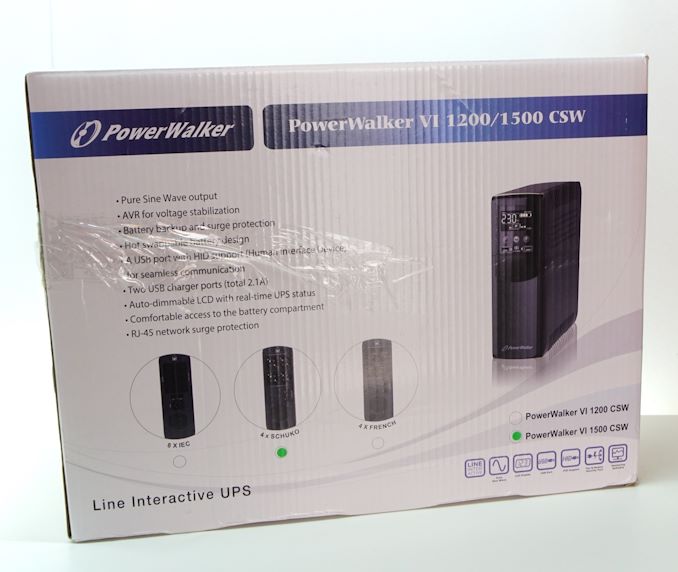

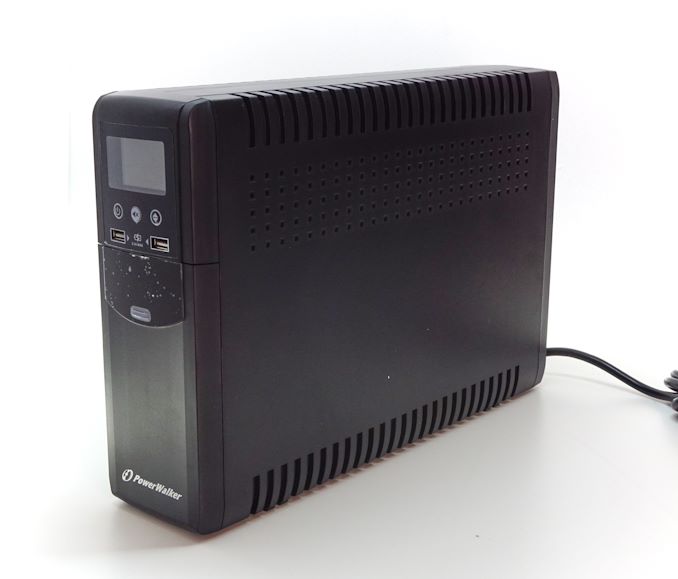
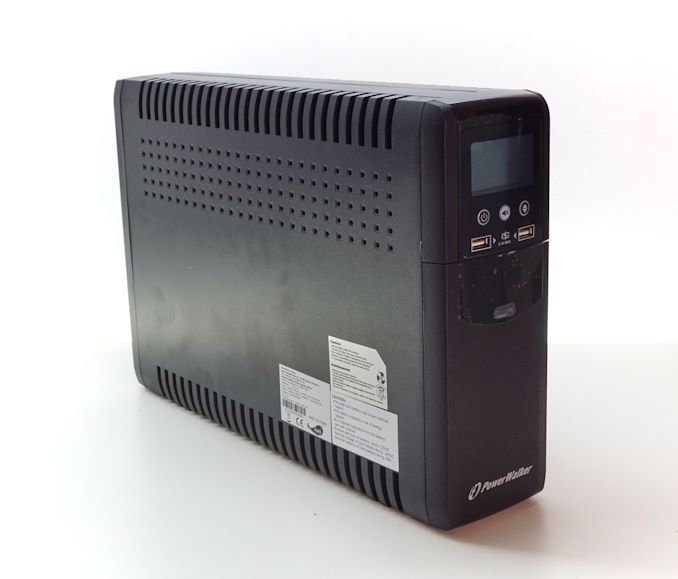
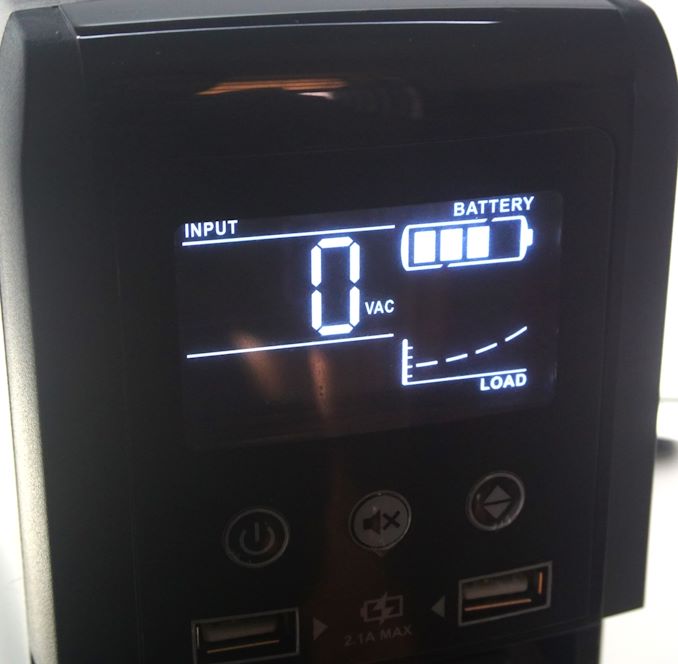

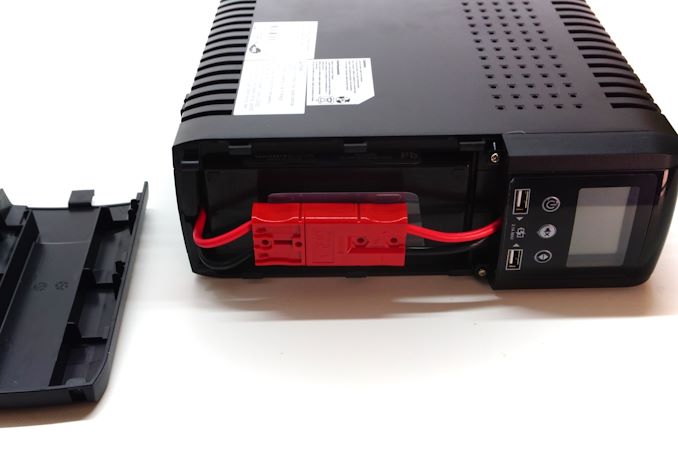
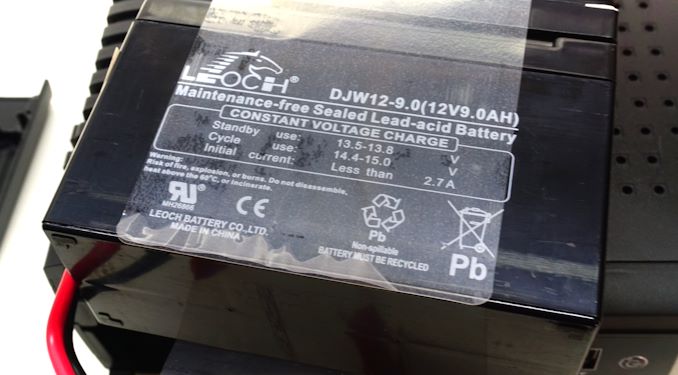
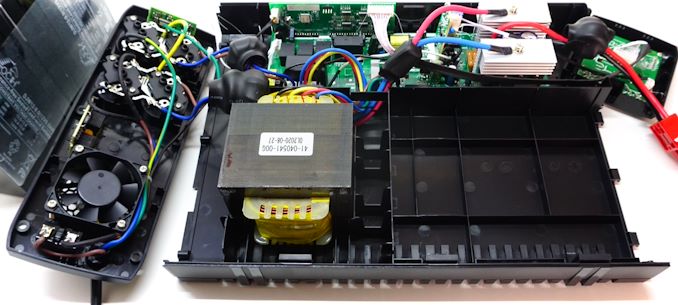

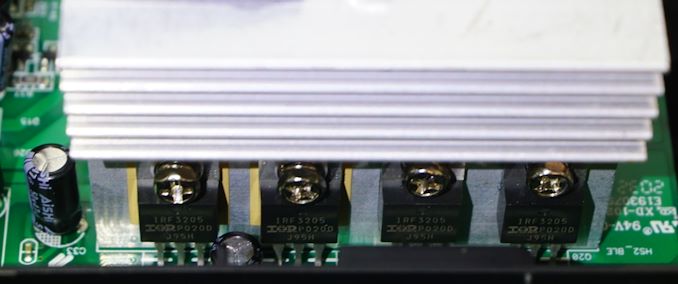

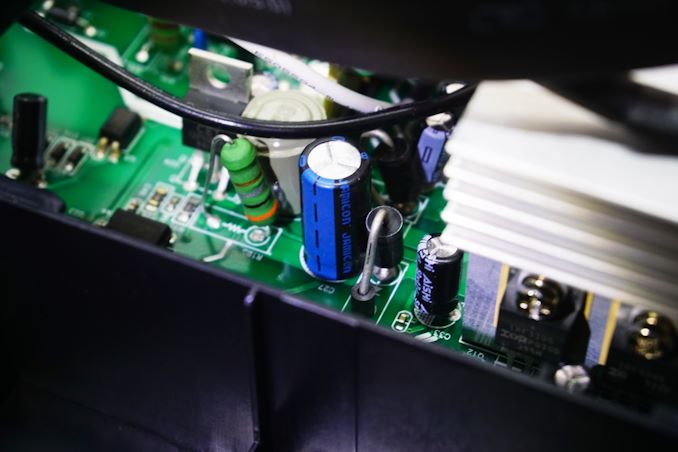
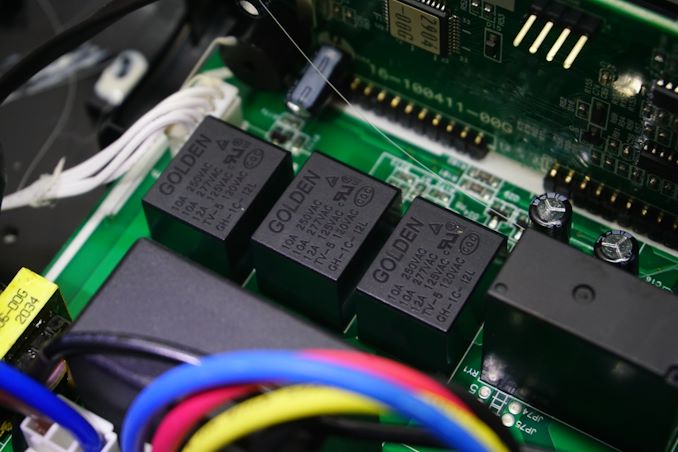








107 Comments
View All Comments
casteve - Wednesday, April 13, 2022 - link
Thanks for the review. A couple of features I look for:- is it passive or fanned/what's the fan noise level? (thanks for that)
- can alerts be silenced? High electronic beeping really freaks out my dog.
- when it's running on batteries or in AVR mode is the output ugly enough to cause a PC's PSU to make ugly noises?
- Is there a master/slave mode where slave outputs turn on/off when the UPS detects load/no-load conditions on the master? A really useful function on older APC units. Put the PC on the master and the monitor and audio amp on the slave.
mode_13h - Wednesday, April 13, 2022 - link
> can alerts be silenced? High electronic beeping really freaks out my dog.Although there's frequently a front panel button to disable the beeps, you'll often find that even models without this will allow you to disable the beep via software, after connecting to its USB or serial port. You can also get some useful and interesting information that way, as well.
That reminds me of a funny story about an older model of APC Smart-UPS. It has a 9-pin serial port, on the back. So, I install the APC Power Chute software and connect it to my PC. As soon as I complete the cable connection, the USP goes *dead*. I unhook it, and it turns back on (I forget if I also had to hit the power button... probably I did). Then, I check the docs and see that the friggin' thing turns out to have a nonstandard pin-out! WTH?? Now I get why their newer models with serial ports don't use a standard-looking 9-pin connector, but that's just *bad*.
tl;dr - Make sure to use the included cable, if you have an APC model with the 9-pin connector on the back!
mode_13h - Wednesday, April 13, 2022 - link
> Is there a masterI discovered this accidentally, when I turned off a co-worker's monitor as I was leaving the office, one Friday afternoon. I thought I heard something else turn off, but I thought nothing of it. After the next time, he figured out what was happening and changed which device was plugged into the master outlet.
I think I've seen some units with a button to disable this behavior. IMO, it should be disabled by default. I'd even previously *seen* the "Master" label, but had no idea what it meant.
watersb - Wednesday, April 13, 2022 - link
I am really pleased to see a UPS review the same level of expertise as the remarkable power supply articles. Excellent!espressomakerdeluxe - Wednesday, April 13, 2022 - link
Brilliant idea! Please do rack mount units. Pretty please.croc - Thursday, April 14, 2022 - link
Excellent article, expertly written by a knowledgeable author I hope that future articles will include graphs / pictures with all reviewed models included. Such a database might become dated, but that also allows us to see how far we've come.One thing I did notice was the clipping of the output waveform of this particular model under load. Without comparisons, it is difficult for the average person to really understand what that means for his equipment, so feel free to continue to comment in an unbiased manner. Hope that AnandTech is paying you enough that you can avoid 'sponsership'.
Kamus - Thursday, April 14, 2022 - link
All of these companies are going to be driven out of business by the "solar generator" market soon.Those guys are making very cheap LFP battery powered, pure sine wave inverters at very competitive prices. (at least compared to an UPS)
The only thing holding back those "solar generators" is that a lot of them don't switch fast enough yet, but honestly, even with the current 15ms switching times I would take them over a lead acid UPS.
philehidiot - Thursday, April 14, 2022 - link
Sounds like this might do the job for me. I want it for powering a couple of guitar amps strapped to a motorcycle to play offensive music at people who have glued themselves to roads in order to "protest" insulation. They never do it in winter, only when it's warm, which is superb for battery life and riding.Tomatotech - Saturday, April 23, 2022 - link
Excellent idea. I'm deaf, if you find me glued to a road please play your music nice and loud so that I can enjoy it properly.Alternately please ask your MP to ask the Govt to follow the recommendations of its own expert advisors and spend some money on insulation. If it had done this when the advice first came out, the UK would be in a much better position with regard to being able to reject buying Russian oil and gas. As it is, your taxes are going towards giving billions to *both* sides of a bloody and genocidical war. I think that's worth protesting about.
DigitalFreak - Thursday, April 14, 2022 - link
Question is, are these reviews going to be frequent or only one or two per year?